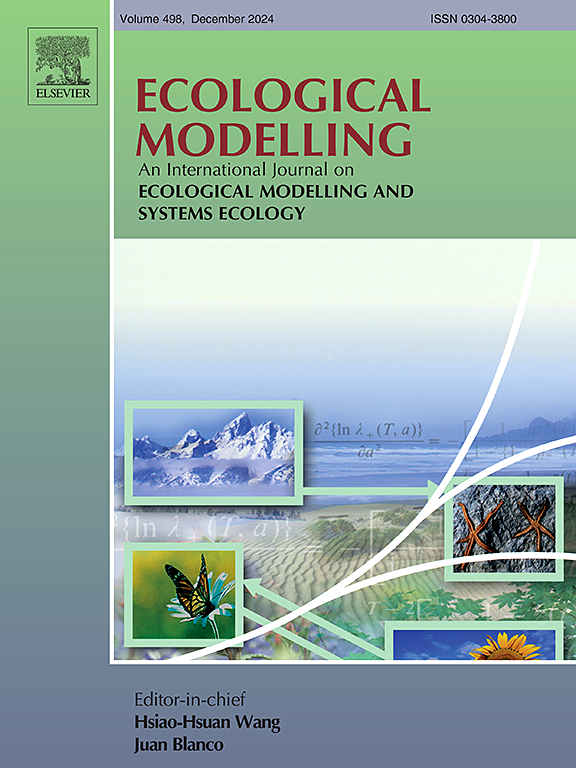Effects of phenotypic plasticity on diversification rates and adaptive evolution in simulated environments with different climatic and cost contexts
IF 2.6
3区 环境科学与生态学
Q2 ECOLOGY
引用次数: 0
Abstract
Phenotypic plasticity can either hinder or facilitate genetic evolution, thus affecting macroevolution. However, the mechanisms and associations of phenotypic plasticity with biodiversity patterns remain unresolved. We investigated the effect of phenotypic plasticity on adaptive evolution in the context of climatic changes and plasticity costs, specifically examining the rates of trait evolution, speciation, extinction, and diversification. We employed an eco-evolutionary agent-based model, incorporating body temperature as a plastic trait that dynamically responds to fluctuations in environmental temperature. In all simulated scenarios, we found that an increase in plasticity led to a decrease in extinction and trait evolution rates. Speciation rates exhibited a non-linear relationship with plasticity, characterized by an asymmetric U-shaped curve. This intricate speciation pattern likely arises from the interplay of two conflicting forces: (1) low extinction rates foster larger population and range sizes, thereby augmenting the potential for speciation; (2) reduced trait evolution, stemming from stable selection, enhances population homogenization and connectivity, consequently inhibiting speciation. Still, overall diversification tends to increase with plasticity. In sum, our simulation unveils potential mechanisms through which phenotypic plasticity could affect macroevolution – specifically, our results support the hypothesis that plasticity should promote diversification, mainly by reducing extinction, while at the same time reducing the rate of change in the plastic trait.
求助全文
约1分钟内获得全文
求助全文
来源期刊

Ecological Modelling
环境科学-生态学
CiteScore
5.60
自引率
6.50%
发文量
259
审稿时长
69 days
期刊介绍:
The journal is concerned with the use of mathematical models and systems analysis for the description of ecological processes and for the sustainable management of resources. Human activity and well-being are dependent on and integrated with the functioning of ecosystems and the services they provide. We aim to understand these basic ecosystem functions using mathematical and conceptual modelling, systems analysis, thermodynamics, computer simulations, and ecological theory. This leads to a preference for process-based models embedded in theory with explicit causative agents as opposed to strictly statistical or correlative descriptions. These modelling methods can be applied to a wide spectrum of issues ranging from basic ecology to human ecology to socio-ecological systems. The journal welcomes research articles, short communications, review articles, letters to the editor, book reviews, and other communications. The journal also supports the activities of the [International Society of Ecological Modelling (ISEM)](http://www.isemna.org/).
 求助内容:
求助内容: 应助结果提醒方式:
应助结果提醒方式:


